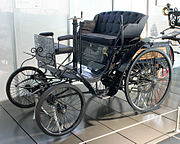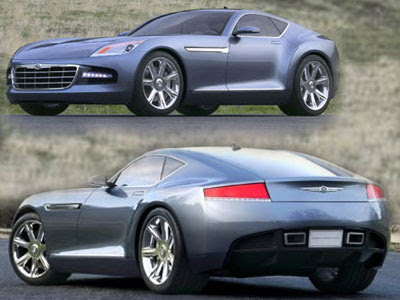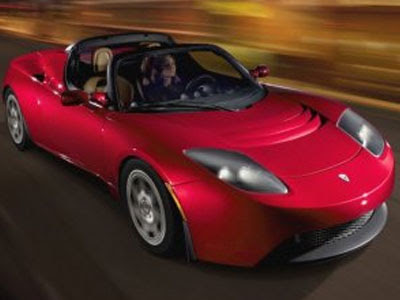
First Integrated Platform of Its Kind Offers Quick, Cost-Effective Solution Scalable to Suit Wide Range of Vehicle Applications
Ener1 Lithium-ion Battery System
NEW YORK, July 27 -- A new, fully integrated electric drive train developed by electric vehicle pioneer, Think, and powered by a lithium-ion battery system made by U.S.-based EnerDel (subsidiary of Ener1, Inc. Nasdaq: HEV), has been delivered to Japan Post via Zero Sports. Zero Sports of Japan has been selected by Japan Post as one of the conversion partners for delivering vehicles as part of a comprehensive on-road testing program which has been fast-tracked by the Japan Postal Service to electrify their fleet of 22,000 delivery vehicles. With the support of strategic partner ITOCHU Corporation, who organized this project, Ener1 provided engineering support on the delivery of the first two postal service vehicles to Japan Post via Zero Sports.
The drivetrain is being used to convert a gasoline -powered truck to run entirely on electric drive. The real -life data will be shared with other major users and potential customers of electric vehicles, including other postal fleets in Europe and the Americas.
Initially developed for the Th!nk City electric car, the complete system is the first of its kind to provide off-the-shelf availability combined with made-to-order performance in a wide variety of plug-in hybrid (PHEV) and electric vehicle (EV) applications.
"The ability to deliver a fully integrated, road-ready package that can be quickly tailored to suit a wide range of vehicle solutions is a major step forward for both of our companies," said Ener1 Chairman and CEO Charles Gassenheimer. "By significantly reducing time-to-market for our customers and meeting accelerated production milestones has opened up avenues of opportunity in exciting new programs. We are happy to be able to announce one such program today."
The new technology platform being utilized for this program unites Think's industry-leading EV drive system with EnerDel's award-winning lithium-ion battery technology. A spin-out of Ford Motor Company in 2003, Think Global has more than 18 years' experience in producing environmentally friendly vehicles. The two companies began an active partnership in 2007, with EnerDel developing a 26-kWh battery system for the Th!nk City vehicle, the first pure electric vehicle of its kind to use the next- generation technology.
"We have seen growing interest in supplying Think's proprietary EV drive system to third parties, a significant new business line and revenue opportunity," said Think Global CEO Richard Canny. "Our long standing relationship with EnerDel has culminated in one of the most advanced battery electric drive train systems in the world, producing reliable, high performance systems, which are both cost-effective and highly adaptable."
The Japan Postal Service is currently converting 25 percent of its fleet of combustion engine vehicles to electric drive as part of a government push to accelerate market adoption and infrastructure development for electric drive vehicles. It is anticipated that federal fleets across the world will be soon to follow their example. Initially they will develop a fleet of pure electric vehicles for testing in general business and sales use in the Kanagawa and Tokyo Prefectures, where the two conversion vehicles are currently undergoing on road testing. A picture of the vehicle may be viewed at http://tinyurl.com/meauur.
"Asia has long pioneered the future of electric drive, and Japan in particular has been a global leader in advancing its adoption," Gassenheimer said. "We are pleased to be working on such a high-profile project, and excited to be contributing EnerDel's proprietary lithium-ion battery technology designed and produced here in America. Working alongside our European partner Think, this has become a valuable global enterprise."
ITOCHU Corporation, a multi-billion dollar Japanese trading company and seed investor in Ener1 has been instrumental in expanding the Ener1 and Think commercial presence in Japan through its broad sales and marketing network. Ener1 is also partnering with Kyushu Electric Power ("KEPCO"), one of the largest public power and utility companies in Japan to create and manufacture rapid recharging systems for electric vehicles.
About Ener1, Inc.:
Ener1 develops and manufactures compact, high performance lithium-ion batteries to power the next generation of hybrid, plug-in hybrid and pure electric vehicles. The publicly traded company is led by an experienced team of engineers and energy system experts at its EnerDel subsidiary located in Indiana. In addition to the automobile market, applications for Ener1 lithium-ion battery technology include the military, grid storage and other growing markets.
Ener1 also develops commercial fuel cell products through its EnerFuel subsidiary and nanotechnology-based materials and manufacturing processes for batteries and other applications through its NanoEner subsidiary.
About Th!nk :
TH!NK was established in Norway in 1991 and designs, develops, manufactures and markets environmentally friendly vehicles and technologies designed to be smart, flexible and to deliver state-of-the-art and safe urban mobility solutions. The TH!NK City is the company's latest generation EV, and offers a range of 180km per charge and a top speed of 100 km/h.
Ener1 Lithium-ion Battery System
NEW YORK, July 27 -- A new, fully integrated electric drive train developed by electric vehicle pioneer, Think, and powered by a lithium-ion battery system made by U.S.-based EnerDel (subsidiary of Ener1, Inc. Nasdaq: HEV), has been delivered to Japan Post via Zero Sports. Zero Sports of Japan has been selected by Japan Post as one of the conversion partners for delivering vehicles as part of a comprehensive on-road testing program which has been fast-tracked by the Japan Postal Service to electrify their fleet of 22,000 delivery vehicles. With the support of strategic partner ITOCHU Corporation, who organized this project, Ener1 provided engineering support on the delivery of the first two postal service vehicles to Japan Post via Zero Sports.
The drivetrain is being used to convert a gasoline -powered truck to run entirely on electric drive. The real -life data will be shared with other major users and potential customers of electric vehicles, including other postal fleets in Europe and the Americas.
Initially developed for the Th!nk City electric car, the complete system is the first of its kind to provide off-the-shelf availability combined with made-to-order performance in a wide variety of plug-in hybrid (PHEV) and electric vehicle (EV) applications.
"The ability to deliver a fully integrated, road-ready package that can be quickly tailored to suit a wide range of vehicle solutions is a major step forward for both of our companies," said Ener1 Chairman and CEO Charles Gassenheimer. "By significantly reducing time-to-market for our customers and meeting accelerated production milestones has opened up avenues of opportunity in exciting new programs. We are happy to be able to announce one such program today."
The new technology platform being utilized for this program unites Think's industry-leading EV drive system with EnerDel's award-winning lithium-ion battery technology. A spin-out of Ford Motor Company in 2003, Think Global has more than 18 years' experience in producing environmentally friendly vehicles. The two companies began an active partnership in 2007, with EnerDel developing a 26-kWh battery system for the Th!nk City vehicle, the first pure electric vehicle of its kind to use the next- generation technology.
"We have seen growing interest in supplying Think's proprietary EV drive system to third parties, a significant new business line and revenue opportunity," said Think Global CEO Richard Canny. "Our long standing relationship with EnerDel has culminated in one of the most advanced battery electric drive train systems in the world, producing reliable, high performance systems, which are both cost-effective and highly adaptable."
The Japan Postal Service is currently converting 25 percent of its fleet of combustion engine vehicles to electric drive as part of a government push to accelerate market adoption and infrastructure development for electric drive vehicles. It is anticipated that federal fleets across the world will be soon to follow their example. Initially they will develop a fleet of pure electric vehicles for testing in general business and sales use in the Kanagawa and Tokyo Prefectures, where the two conversion vehicles are currently undergoing on road testing. A picture of the vehicle may be viewed at http://tinyurl.com/meauur.
"Asia has long pioneered the future of electric drive, and Japan in particular has been a global leader in advancing its adoption," Gassenheimer said. "We are pleased to be working on such a high-profile project, and excited to be contributing EnerDel's proprietary lithium-ion battery technology designed and produced here in America. Working alongside our European partner Think, this has become a valuable global enterprise."
ITOCHU Corporation, a multi-billion dollar Japanese trading company and seed investor in Ener1 has been instrumental in expanding the Ener1 and Think commercial presence in Japan through its broad sales and marketing network. Ener1 is also partnering with Kyushu Electric Power ("KEPCO"), one of the largest public power and utility companies in Japan to create and manufacture rapid recharging systems for electric vehicles.
About Ener1, Inc.:
Ener1 develops and manufactures compact, high performance lithium-ion batteries to power the next generation of hybrid, plug-in hybrid and pure electric vehicles. The publicly traded company is led by an experienced team of engineers and energy system experts at its EnerDel subsidiary located in Indiana. In addition to the automobile market, applications for Ener1 lithium-ion battery technology include the military, grid storage and other growing markets.
Ener1 also develops commercial fuel cell products through its EnerFuel subsidiary and nanotechnology-based materials and manufacturing processes for batteries and other applications through its NanoEner subsidiary.
About Th!nk :
TH!NK was established in Norway in 1991 and designs, develops, manufactures and markets environmentally friendly vehicles and technologies designed to be smart, flexible and to deliver state-of-the-art and safe urban mobility solutions. The TH!NK City is the company's latest generation EV, and offers a range of 180km per charge and a top speed of 100 km/h.




